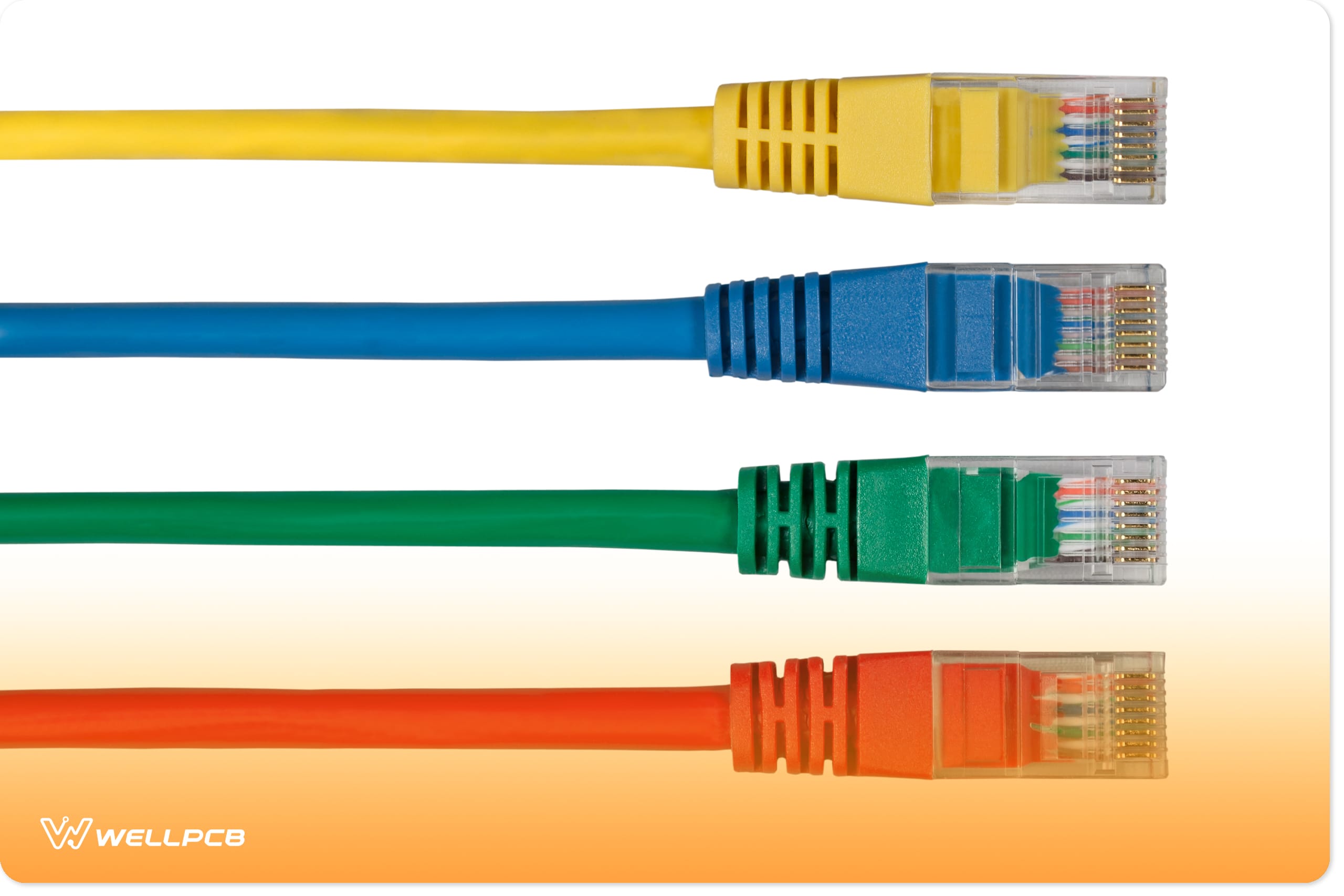Contents
What is MOSFET?
A MOSFET is a compact transistor. Transistors are semiconductor devices used to control the flow of electric current by regulating how much voltage flows through them.
What makes it different from a BJT is how it allows current to pass through. In MOSFET, the voltage applied to the gate region determines how much current flows from the drain to the source. And, this property gives MOSFETs their name – Metal Oxide Semiconductor Field Effect Transistors. Interestingly, these transistors can amplify a signal or let only one specific kind of electric charge carrier through.
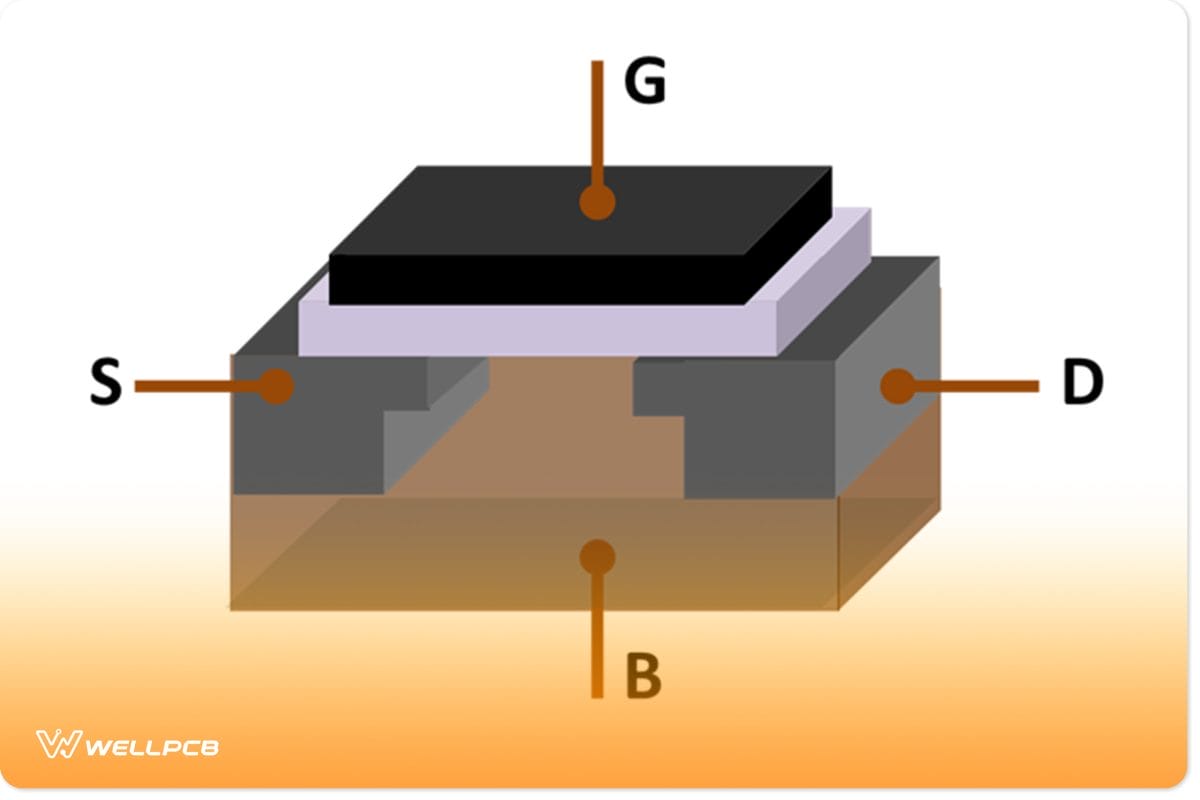
(MOSFET STRUCTURE)
In a nutshell, it is a three-terminal device that determines electric flow in a closed circuit. Its primary structure terminals are Source (S), gate (G), and Drain (D). What it does is dependent on the applied gate voltage. However, if you consider its body, then MOSFET is a four-terminal device.
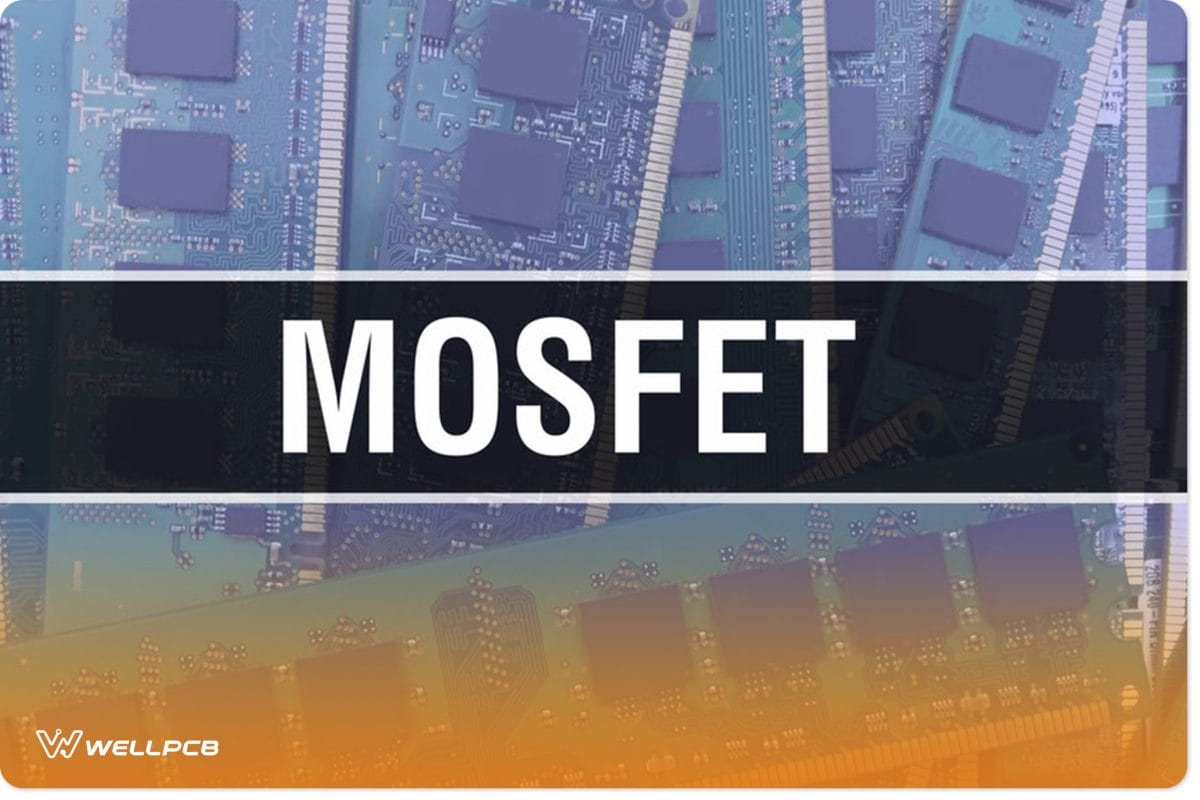
(MOSFET with Electronic computer hardware background)
Basic types of MOSFET
There are three basic types of MOSFETs.
The first type is the “N-channel enhancement-mode MOSFETs” or usually on (n-channel MOSFET). It allows current flow through the channel between drain and source even with zero input voltage applied across its terminals. Also, this means that it needs no gate signal for operation and, hence, is helpful in simple digital circuits. Here, the pins are physically separated.
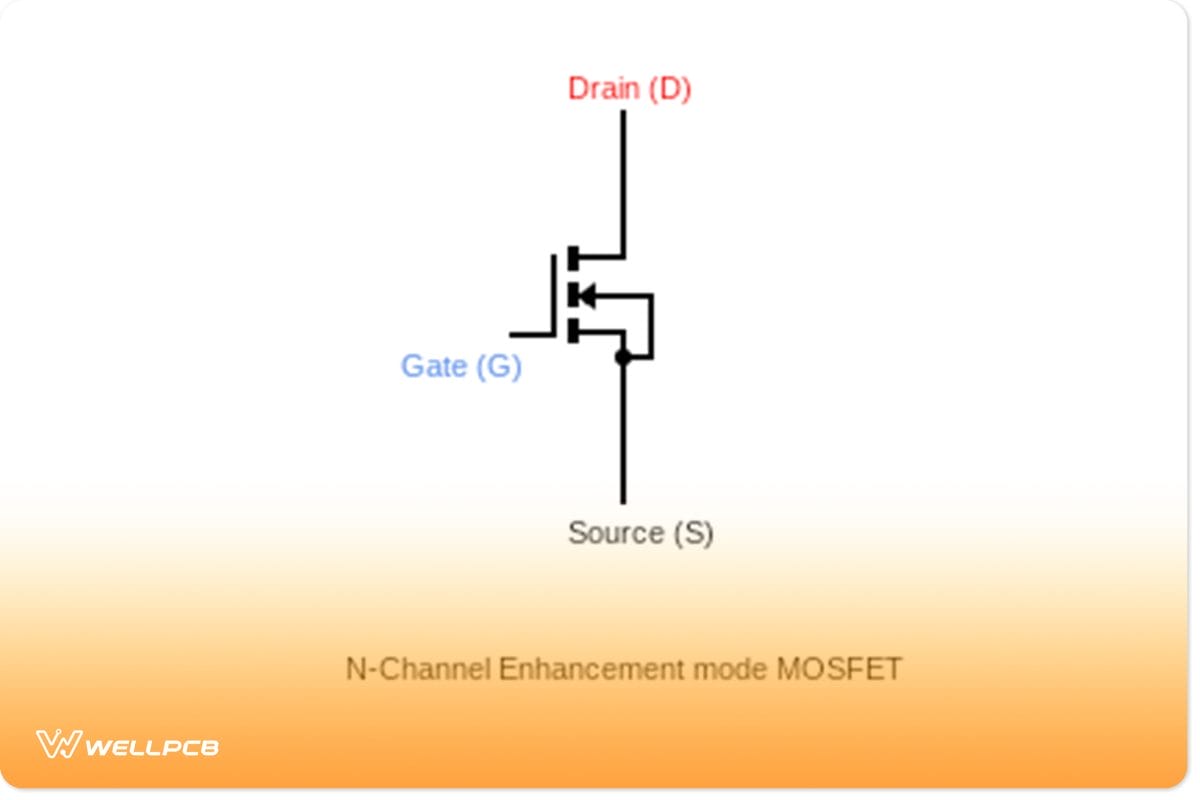
(N-channel Enhancement Mode MOSFET)
The second type of MOSFETs is the “N-channel depletion mode” or usually off (n-channel). This type requires a negative voltage for it to turn on and allow the flow of electric currents. Also, it has an advantage since this type of transistor acts as a resistor when it is off. Hence, very useful in specific applications that require control of input voltage. The pins are physically connected.

(N-Channel Depletion Mode MOSFET)
Thirdly, the “P-channel depletion-mode MOSFET transistor” is usually off (p-channel MOSFET). This type blocks any current from flowing through it unless a positive charge flows across its terminals. It means that this type of transistor acts as an insulator. Therefore, it is not suitable in specific applications where it is necessary to pass current at all times.

(P-Channel Depletion Mode MOSFET)
Lastly, “P-channel enhancement mode MOSFET” or normally on (p-channel) MOSFET. This type requires zero gate-source voltage for current conduction. Also, it has an advantage over its n-channel counterpart because it does not dissipate energy when in its off state. This feature allows its use in switching applications.

(P-Channel Enhancement Mode MOSFET)
How does a MOSFET work?
The first thing we should talk about is how a MOSFET works. The answer may surprise you!

(MOSFET Schematic diagram)
A MOSFET works by either letting current flow across its terminals or not, depending on the voltage applied. It operates on an electrical field effect produced by the voltage applied across the semiconductor surface adjacent to the metal oxide layer. As a result, this allows the MOSFET to work as either a p-type or n-type.
The gate electrode controls channel conductivity between the channel at the source and the drain region within the device. This principle of operation makes the transistor act as an ideal switch. Thereby allowing us to control how electricity flows through our circuit.
It is how you can use a MOSFET. By controlling how much voltage flows through the gate region, you can determine the drain current in the drain-source channel.
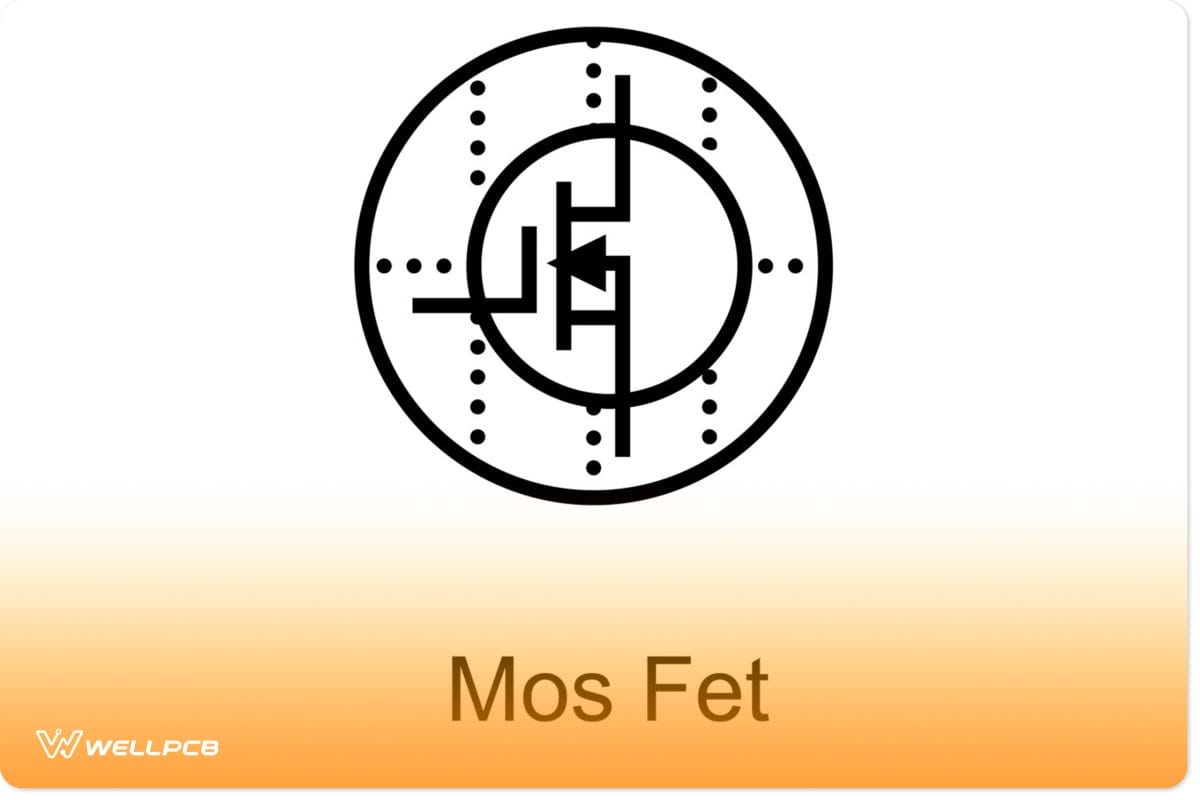
(MOSFET Symbol inline design)
NB: It is important to note that MOSFET transistors and BJT transistors slightly differ. In BJTs, current flows from collector to emitter, while in MOSFETs, this flow happens between source and drain. What happens is that when the voltage applied to its gate terminal exceeds a specific threshold voltage, the current starts flowing through it.
Advantages of MOSFET over BJT
The advantages of MOSFET over BJT are as follows:
- First, MOSFET is useful for making more compact circuits.
- Second, MOSFETs require less power and energy than BJT transistors, making them more efficient overall. Since there is no base current, the device dissipates very little energy when in its off state.
- Third, MOSFETs are cheaper to manufacture than BJT transistors. Therefore, they are the preferred choice when designing circuits at home or for hobbyist purposes.
- Next, MOSFET can work in high-temperature environments since its gate terminal does not need insulation as a PNP transistor would. It makes it useful in applications where temperatures become very high.
- Finally, MOSFETs are useful for voltage amplification since they have two conducting terminals. This feature allows a more significant flow of current through the circuit when in its on-state. In contrast, BJTs only require one terminal to pass an electric current from the drain to the source terminal or vice versa.
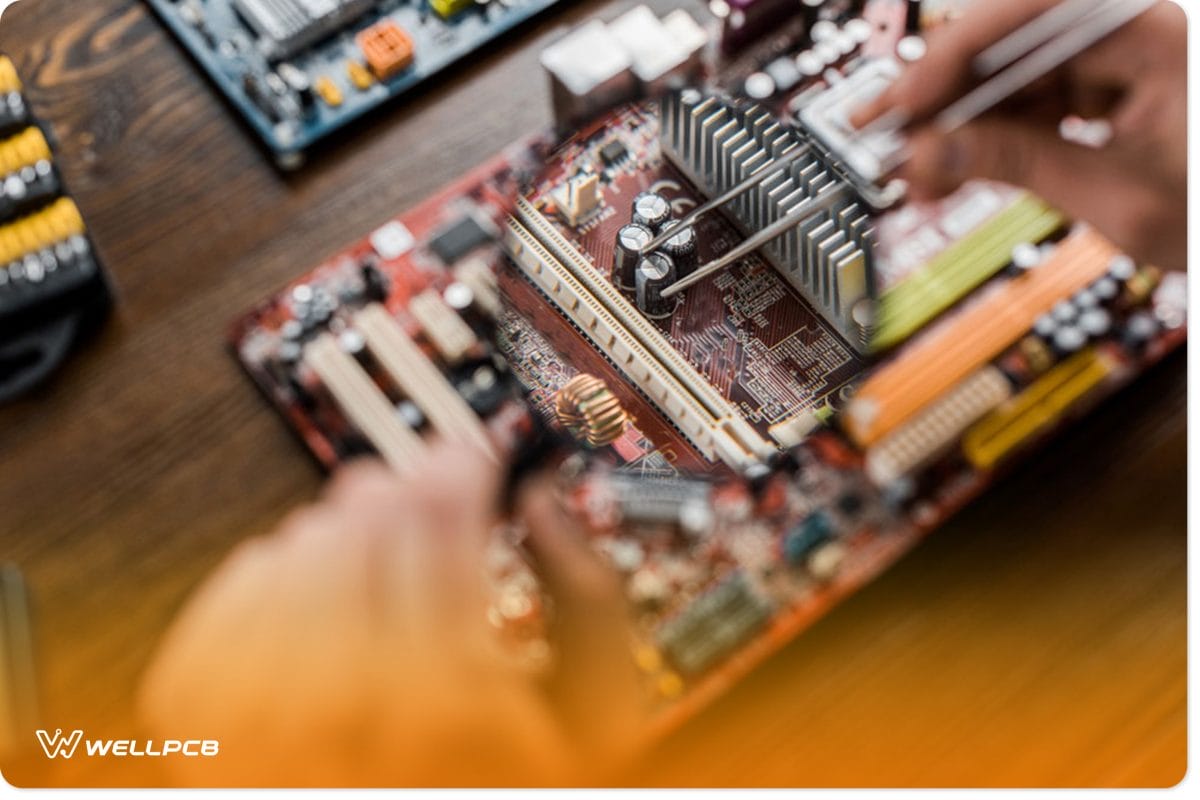
(Computer Engineer tweezers)
Applications of MOSFET
- MOSFET as a switch
MOSFET is very useful in electrical power applications for control voltages. It can easily do this by conducting current flow control through the gate terminal. Consequently, this makes it either turn on or off (much like a primary switch). Moreover, this makes MOSFETs ideal devices useful as an interface between power sources and devices that need to be powered.

(Mosfet as a switch)
An example application of an n-channel MOSFET. When the switch is pushed, the LED lights up.
- Amplification applications
MOSFETs can also amplify current passing through it by allowing larger electric currents to flow through its drain electrode when in its on-state. It makes MOSFET suitable for applications that require voltage amplification (such as amplifying sound waves).
- Dynamic applications
MOSFETs are helpful in applications where they need to change state quickly, making them valuable devices in circuit designs that require a lot of switching.
- As voltage-controlled resistors or variable resistors
When MOSFET acts as an off switch in applications, they are suitable devices for making variable or voltage-controlled resistors.
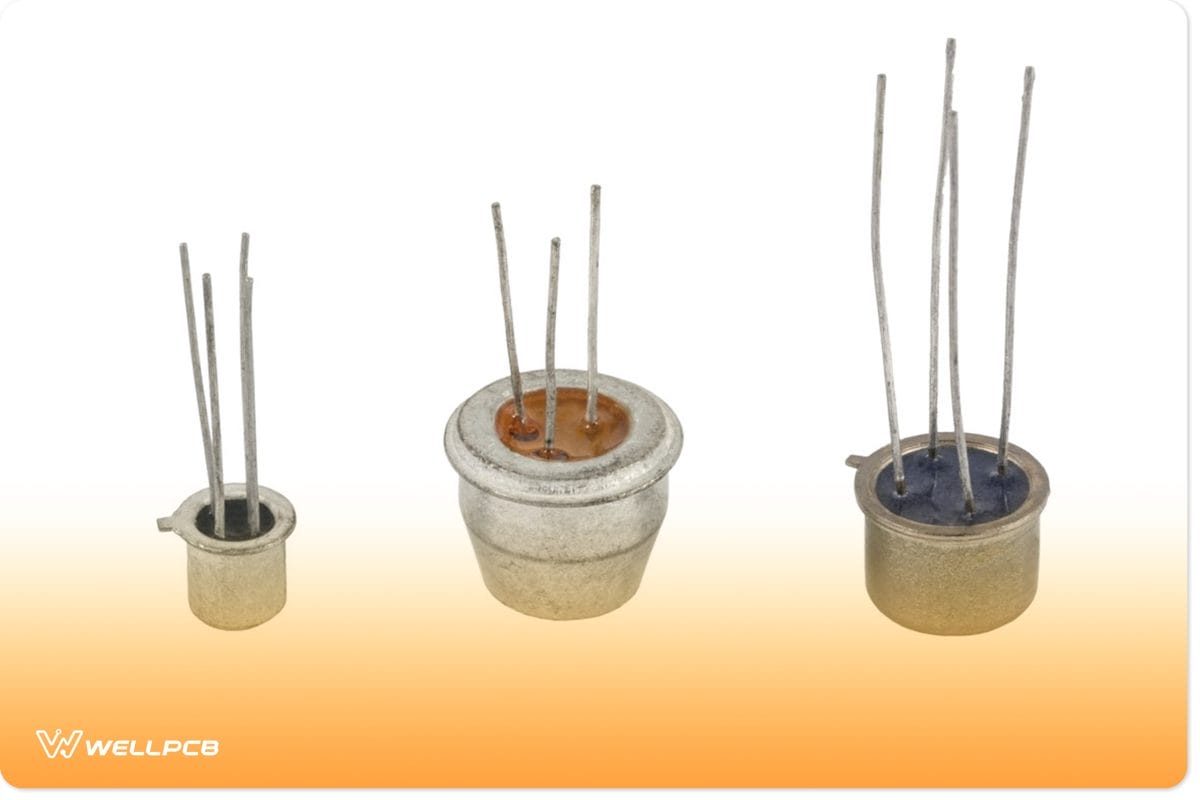
(Transistors)
Conclusion
In conclusion, MOSFETs are suitable transistor devices and can be helpful in a wide array of applications. They’re straightforward to use and understand.
We hope you learned how a MOSFET works as well as its uses in your daily life! If you have any further questions, please let us know. We would love to help.



